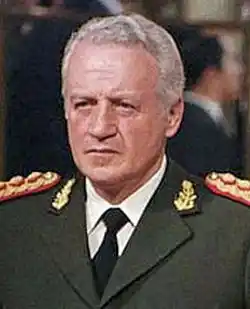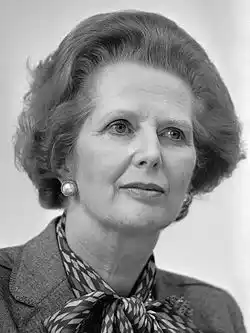The Falklands War was a conflict that was fought between the United Kingdom and Argentina between the 2nd of April and the 14th of June 1982. The two and a half month long conflict came about as a result of long-running claims by Argentina on what they termed Islas Malvinas. The South Atlantic island archipelago lies approximately 350 kilometers off the coast of Argentina but had been colonized by the British in the middle of the nineteenth century. The war was largely manufactured by the military junta in Argentina in the early 1980s to distract from Argentina’s collapsing economy and precarious political situation. The government of Leopoldo Galtieri believed Britain would not respond to occupation of the islands. Instead Prime Minister Margaret Thatcher sent an expeditionary force to the South Atlantic which reclaimed the islands in a short conflict. The islands have remained part of Britain since, though they remain thinly inhabited. The embarrassing defeat in the war contributed to the collapse of the military dictatorship in Argentina in 1983.[1]
Research your ancestors on MyHeritage
The Falklands War chronology of eventsThe Falklands War chronology of events
The Falkland Islands are a remote archipelago of hundreds of islands lying approximately 350 kilometers east of the coast of Argentina. The islands are quite southerly and average temperatures here year round are approximately 5 degrees Celsius (just over 40 degrees Fahrenheit). The islands were uninhabited when the first European explorer to reach them, an Englishman by the name of John Strong, arrived here in 1690. He named the channel running between the two largest islands of the chain, West Falkland and East Falkland, the Falkland Channel, in honor of Anthony Cary, fifth Lord Falkland, who was the Lord of the British Admiralty at the time.[2]

The newly discovered island archipelago was considered remote enough and inhospitable enough that the British did not bother trying to colonize it after discovering the Falklands in the late seventeenth century. It was only in 1765, in response to a French effort to establish a small colony there, that the British claimed the island and settled Port Egmont. Five years later the Argentine dimension entered the equation when a flotilla of ships sailed from Buenos Aires, the capital of the Spanish Viceroyalty of Argentina at the time, and claimed control of the island. The Spanish held the islands until they withdrew their garrison in 1811 during the War of Argentine Independence. The British then resumed control in 1833 and remained in control of the islands thereafter.[3]
Argentine governments periodically expressed sovereign claims to the islands in the nineteenth and twentieth centuries. Juan Peron, the hugely influential president of Argentina in the middle of the twentieth century, offered to buy the islands from Britain in 1953. What finally led to war were the difficulties that the military junta that ruled Argentina from 1976 onwards, the National Reorganization Process, found itself in during the early 1980s. As economic problems beset Argentina, the leader of the junta, Leopoldo Galtieri, decided to try and seize Islas Malvinas to bolster support for the regime.[4] The belief was that the British, who had gone through over three decades of decolonization and imperial regression after the Second World War, would not make the effort to stop the Argentines from securing a relatively valueless island chain many thousands of kilometers from Britain. Thus, Galtieri dispatched forces to both the Falkland Islands and South Georgia in March and early April 1982 and occupied each with little resistance.[5]

In London the Prime Minister of the day, Margaret Thatcher, was disinclined to accept the Argentine takeover of the islands as a fait accompli. In the course of April she began preparing a large British expeditionary force to sail to the South Atlantic even as diplomatic negotiations to end the budding Falklands War without direct military engagement began. By mid-May 1982 these had failed and a large number of British forces, including battleships, frigates and aircraft carriers had arrived to the South Atlantic. Several weeks of naval and aerial warfare followed as the British established control over the seas around the Falklands in advance of an amphibious landing.[6]
By early June the British had occupied East Falkland Island and were preparing some 8,000 men to land on West Falkland and take the Argentine positions there. After landing, the Battle of Port Stanley commenced on the 11th of June. It lasted three days before the Argentines surrendered. This brought the war to an end, though there were no peace agreements drawn up, as the Argentines had never declared war and there was no war in international law to conclude. The Galtieri regime collapsed just weeks later in Argentina, followed by the junta in 1983. In Britain, Thatcher called an early election to capitalize on her increased popularity at her handling of the war. The Conservatives won a resounding victory and Thatcher went on to govern for another eight years. Argentina maintains a claim on the Falkland Islands to this day.[7]
Demographic impact of the Falklands WarDemographic impact of the Falklands War
The demographic impact of the Falklands War was relatively limited. The islands are an isolated and relatively inhospitable archipelago in the South Atlantic. They were inhabited by a few hundred settlers from Britain in the nineteenth century and by the time of the war in 1982 had just over 2,200 people living on them, nearly all of British extraction. It has expanded since to just over 3,500 people, some being British military personnel. As such, the war had very little impact on the demography of the islands. Counterfactually, had the British not responded and simply allowed the Argentines to take control of the islands in 1982, there would probably have been a reasonably substantial demographic shift, with Argentine colonists brought in to set up a government administration and military base there. There would not have been mass migration though. Whether under British or Argentine rule, the islands are simply too remote, too inhospitable and too economically unattractive to draw large scale settlement.[8]
Research your British ancestors on MyHeritageResearch your British ancestors on MyHeritage
Research your ancestors on MyHeritage
See alsoSee also
Explore more about the Falklands WarExplore more about the Falklands War
- United Kingdom, Recommendations for Military Honours and Awards, 1935-1990 records collection on MyHeritage
- United Kingdom Newspapers from OldNews.com records collection on MyHeritage
- British Military Officers records collection on MyHeritage
- Argentina, Baptisms, 1645-1930 records collection on MyHeritage
- Familias-Argentinas (Argentinian Family Tree) records collection on MyHeritage
References
- ↑ https://www.nam.ac.uk/explore/british-army-and-falklands-war
- ↑ https://www.falklandsbiographies.org/biographies/strong_john
- ↑ Peter Calvert, ‘Sovereignty and the Falklands Crisis’, in International Affairs, Vol. 59, No. 3 (Summer, 1983), pp. 405–413.
- ↑ David Pion-Berlin, ‘The Fall of Military Rule in Argentina, 1976–1983’, in Journal of Inter–American Studies and World Affairs, Vol. 27, No. 2 (Summer, 1985), pp. 55–76.
- ↑ Max Hastings and Simon Jenkins, The Battle for the Falklands (London, 1992).
- ↑ https://www.nam.ac.uk/explore/british-army-and-falklands-war
- ↑ John Blundell, Margaret Thatcher: A Portrait of the Iron Lady (London, 2008).
- ↑ https://www.worldometers.info/world-population/falkland-islands-malvinas-population/

